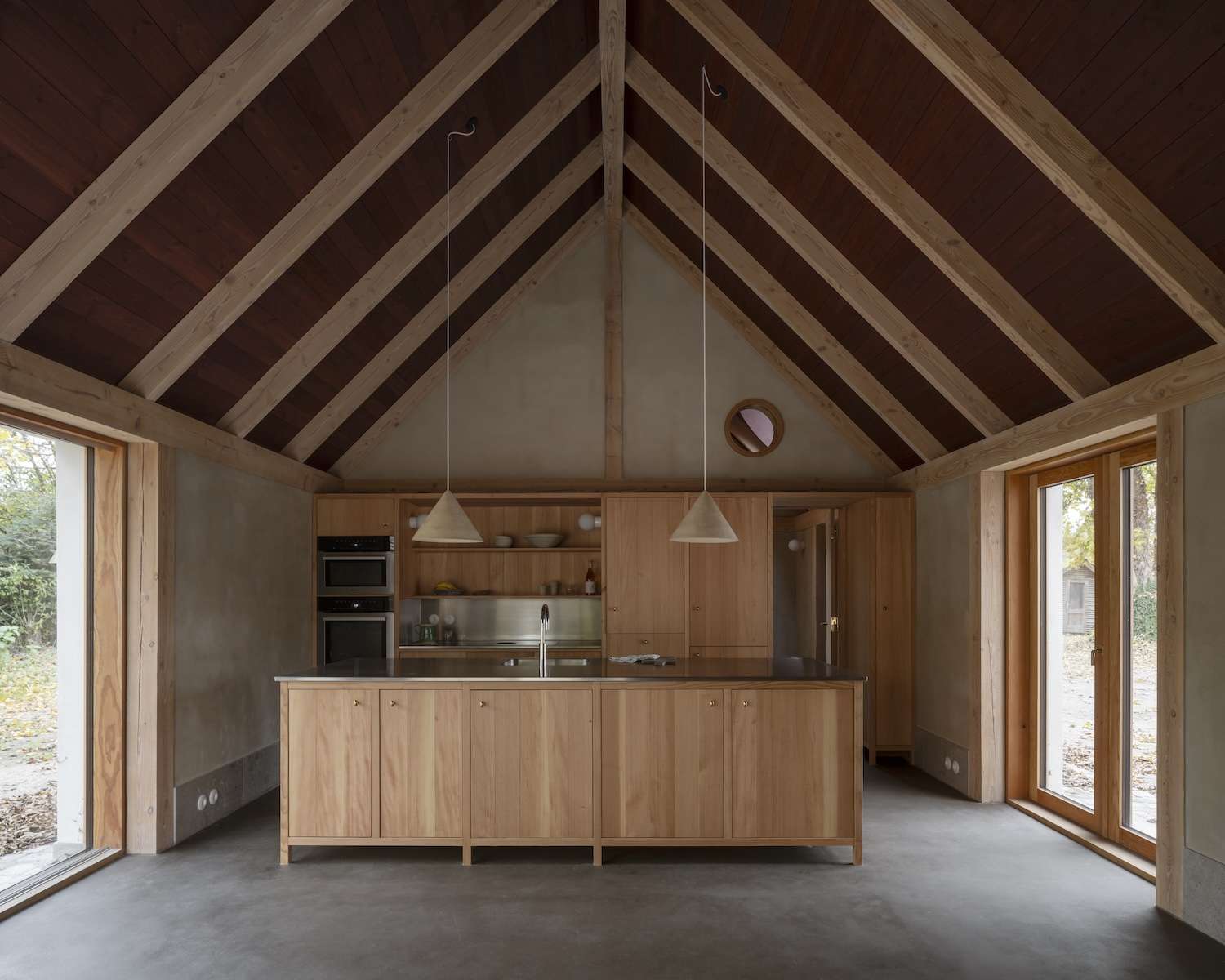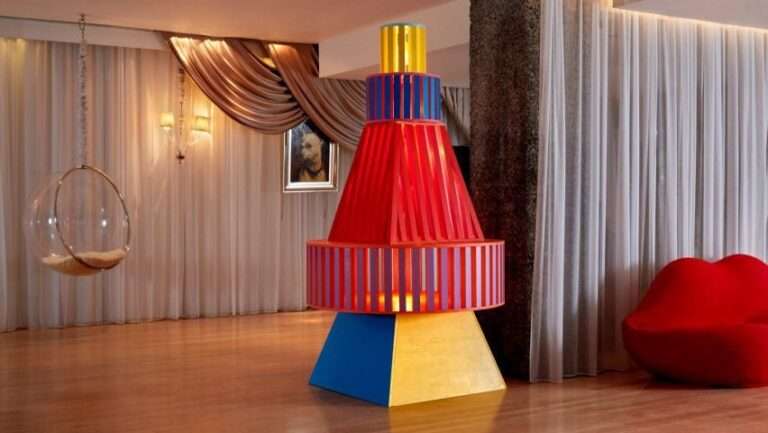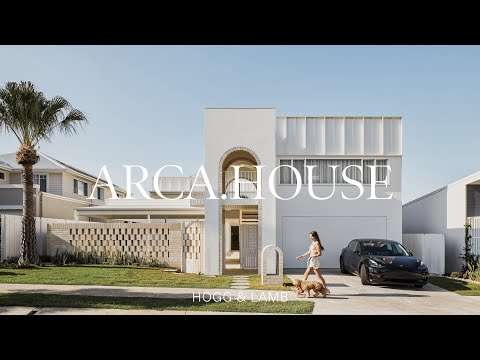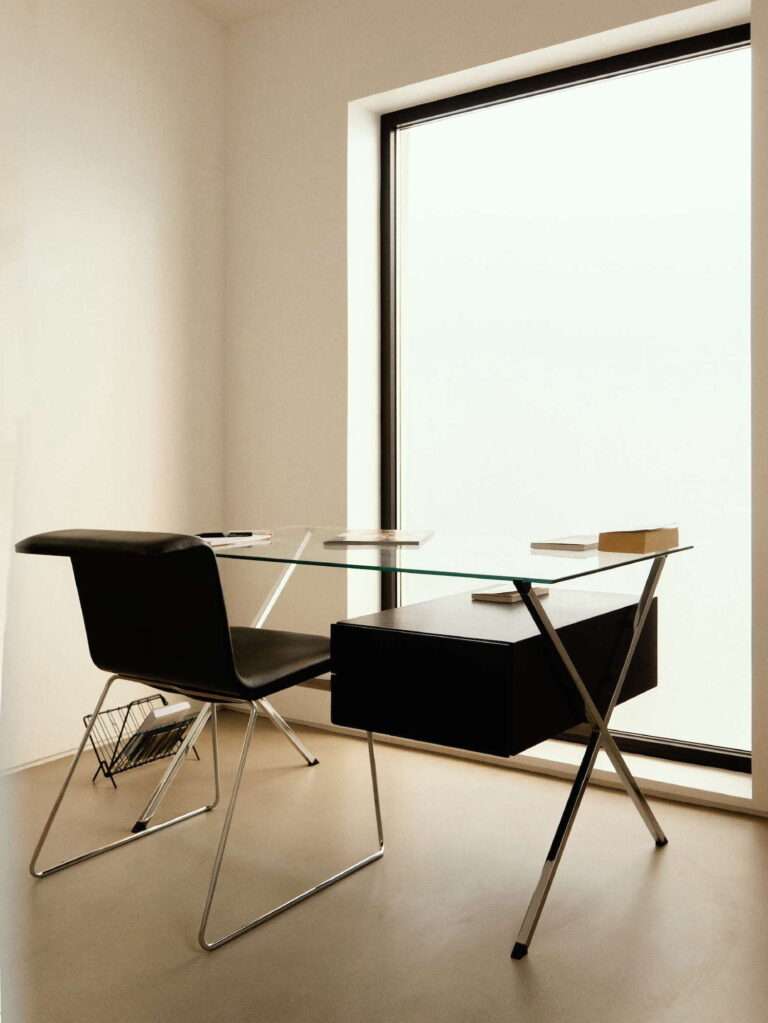
Hedeskov Center for Regenerative Practice is minimalist architecture project located in Djursland, Denmark, designed by Djernes & Bell. What immediately strikes the visitor is the building’s clay finish—a geological autobiography rendered in earthy hues that map directly to core samples taken from the site itself. This isn’t decoration; it’s a material manifesto. Each pigmented layer tells the story of what lies beneath, connecting interior space to the geological time embedded in the landscape.
“We need a new material culture,” asserts Justine Bell of Djernes & Bell, “one that rejects the hidden systems of unnecessary production and obscene waste, a culture where traces of use, decay and repair are celebrated and the act of making good becomes the pivotal role between humans and their resources, where consumption is exchanged for symbiosis.”
This philosophy of “making good” transforms what might have been a conventional renovation into something far more profound. The project divides its approach between restoration and transformation: the original schoolhouse undergoes careful conservation, while the old garage receives a new internal timber frame set on limecrete foundations—a contemporary interpretation of the region’s vernacular “bindingsværk” tradition of half-timbered construction.
The architectural decisions are deeply rooted in bioregional thinking. Moraine clays, typha (bullrush) fiber, and local lumber aren’t simply sustainable alternatives to conventional materials—they’re active participants in a regenerative cycle that connects building to landscape. What’s remarkable is how these choices simultaneously look backward to traditional craft knowledge and forward to post-carbon necessities.
The irregular openings cut through the structure serve a purpose beyond mere aesthetics. These apertures, following vernacular geometries at various scales, create framed views that make visible the surrounding reforestation and regenerative agriculture initiatives—a constant reminder of the building’s place within larger ecological systems.
This approach didn’t emerge in isolation. The project benefits from what might be called “disciplinary permeability”—the involvement of building scientists, anthropologists, foresters, and ecologists alongside traditional craftspeople. Sofie Aagard of Hedeskov explains this inclusive philosophy: “One of our principles at Hedeskov is ‘Diversity rules.’ From furniture makers and biologists, material scientists and algae researchers, longevity nerds and building engineers—all possible perspectives on regeneration are welcome at Hedeskov.”




